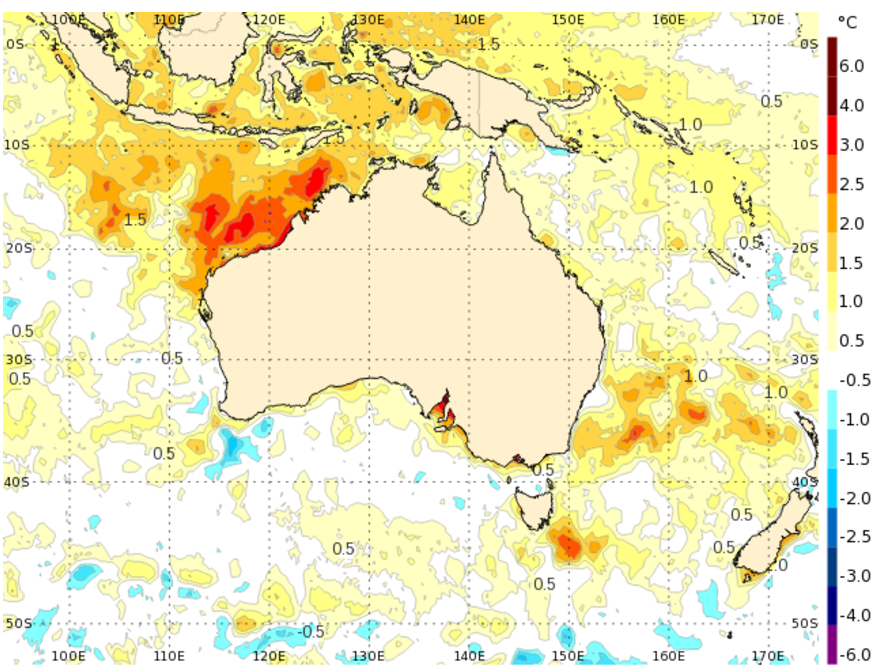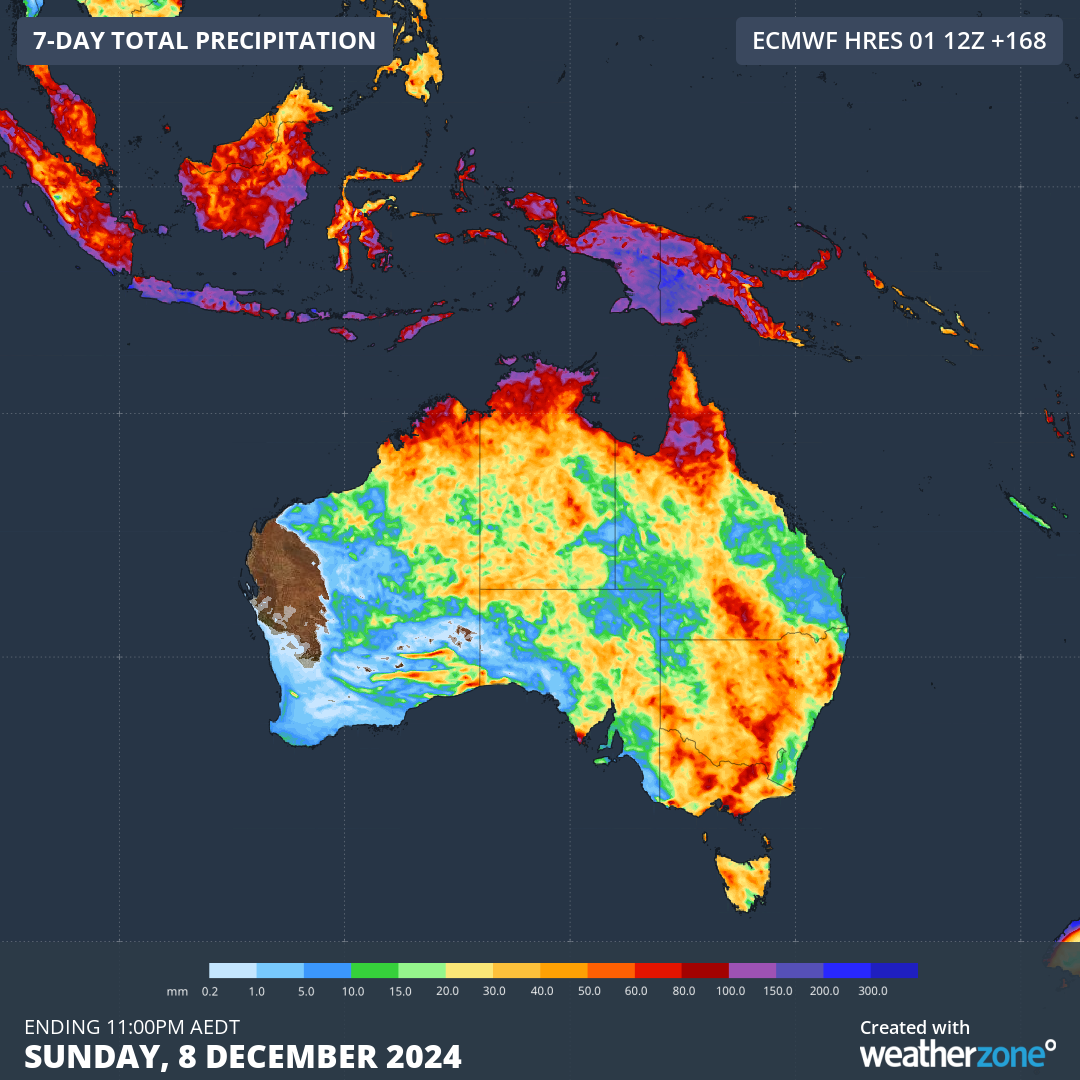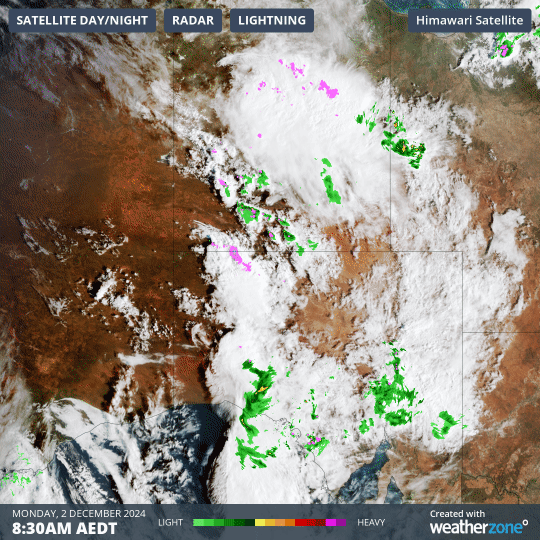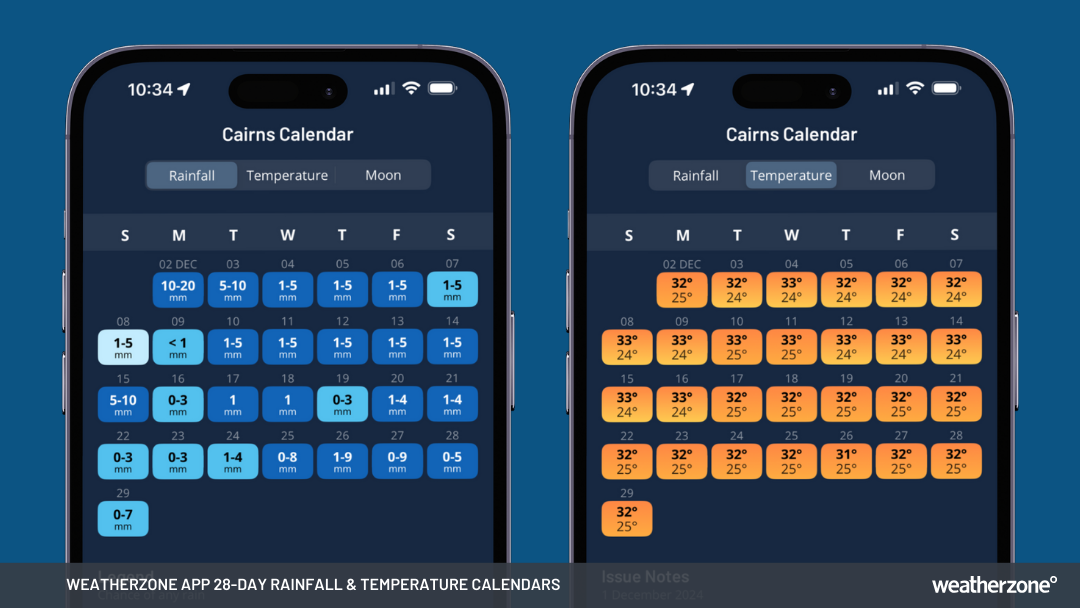What to expect for Australia's first week of summer
After a stormy November across much of the country – especially in large parts of northern and eastern Australia in the final week of the month – the unstable pattern is set to continue into the first week of December.
As the 2024/2025 summer kicks off, widespread storms will continue across the country due to a range of factors, with the two key elements being:
- An array of surface-based low pressure troughs interacting with a series of upper-level troughs
- Above-average sea surface temperatures to the northwest and southeast of Australia, which will supply ample moisture for storms due to enhanced evaporation
It’s worth taking a look at Australia's sea surface temps to illustrate the degree to which they are contributing to recent and current weather.

Image: Sea surface temperature anomalies (difference compared to the average) for Australian waters on Saturday, November 30. Source: BoM.
Of particular note is the relatively large area of water off northwestern Australia which is between two and four degrees above the long-term average.
We saw the effects of that broad area of warm ocean last week, as a colossal conveyor belt of tropical moisture caused storms and areas of heavy rain across roughly half the country.
Some of the newsworthy rainfall observations over the weekend included:
- Falls exceeding 200mm within 24 hours in the Gold Coast hinterland, where flooding was reported.
- Canberra's heaviest rainfall day of the year to date, with 40.4mm to 9am Sunday.
- Heavy rain and storms that extended all the way south to Victoria, Tasmania, and to southeastern parts of SA.
Image: 28-Day Rainfall & Temperature Calendars on the Weatherzone app for Cairns, QLD.
The coming week's rainfall totals may not be as extreme as last week's in many places, but it's definitely set to be another active week of stormy weather – and not just in the tropics and eastern Australia.

Image: Accumulated rainfall totals across Australia predicted by the ECMWF model for the week ending Sunday, December 8.
Indeed there were already active storms on Monday morning in Central Australia, far western Queensland and some fairly arid parts of South Australia.

Image: Combined two-hour radar and satellite loop for central parts of the continent on the morning of Monday, December 2, 2024.
